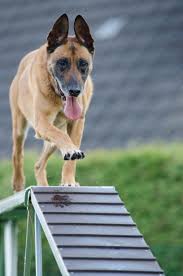If you teach your dog to go to his place, it can be helpful if you need to calm him down or get out from under his feet. You can choose a place in the house or a different place in each room to send your dog when you ask him to go to his place. This command is quite simple to teach a dog.
Preparation for training
Your dog needs to know how to lay down command before teaching him to go to his place. Perform a few workouts while working the"down"."As soon as your dog can safely lie in the team, you are ready to go to the placement team.
Then you decide where to take your dog when you give the command to the place. The bed or carpet area works well. If you want to use the command in any room, use a portable bed or rug that can be easily moved from room to room.
You'll also need some goodies and a clicker if you want to use a clicker workout.
Select
Select the command word to use. Using a word usually works best. A" seat "is often used, but a" bed "or a" rug " also works well.
Lure the dog
Start by standing next to a bed or rug that serves as a place for your dog. Give the command" place", and then use a treat to lure the dog to its place. Once all four feet are on the mat, praise your dog or press a button and give him a treat. Repeat this several times. Most dogs will go to a bed or mat on command after a few short workouts.
Lay down
If your dog puts all four feet on a mat or bed while you give the command, start asking him to lie down. Give the command" place", and as soon as the dog reaches the carpet, give the command " down."
The first few times may take a few minutes, but after a few training sessions, your dog should automatically lie down when he reaches the mat after the "place" command is issued. If a dog does this several times, he should only receive treats and praise when he lies and has given the command "place".
Increase time
Now that your dog is consistently lying on the carpet, having given the command" place", you can increase the time he spends there. To do this, slowly lie down a few seconds before offering a treat, after she responds to the team. As you can see the progress, slowly add more small time steps.
If your dog makes a mistake and gets up before giving him a treat, repeat the "place" command and return to the last point where your dog succeeded. If you slowly add the time your dog stays in his place, you can soon give a command and get him in his place while you think about what you did.
Moving to other rooms
If you want to use the "place" command in other rooms, wait until your dog masters the command in one place. Now move the bed or carpet to another room and start the process again. Or if you prefer not to move the bed from room to room, choose a place in each room that will serve as a place for your dog when you give the "place" command.
Many dogs quickly pick up and immediately lie down in bed or on the carpet, and lie down when giving orders in a new room. Other dogs need to learn that the same behavior is expected in a new room, almost as if they are not working on it at all. If this is the case for your dog, start from the beginning. Give the command, lure the dog to the carpet and teach him to lie, as in the previous room. Again, wait until your dog has mastered the "place" command in a new room before moving to the next room.
Verification problems and behavior
Most dogs learn this team pretty quickly. For the dog, a few short training sessions are enough to find his bed or rug on command.
One of the most common mistakes that dog owners make is the lack of consistency. For example, dogs like to spend time in the kitchen when someone cooks. Although a dog underfoot can be frustrating, even dangerous, it is easy to ignore and continue cooking.
No matter how busy you are, your priority should be to introduce this team to your dog — it won't take as long as you think either. This will lead to mistakes at first, but remember the ultimate goal: your dog immediately performs a command and goes to his place as he approaches. A little extra time today will save you a lot of frustration in the future.

